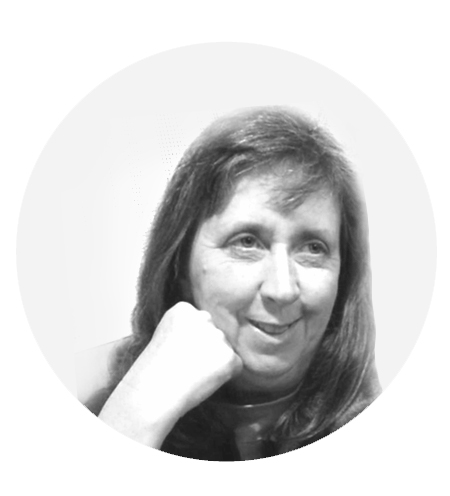Andrew Heumann
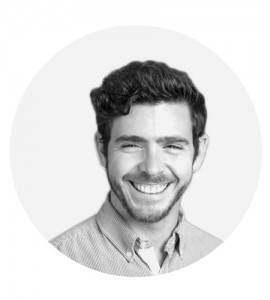
Design Computation Specialist, NBBJ
Andrew Heumann leads the Design Computation team at NBBJ, overseeing strategy, development, and implementation of computational tools for diverse projects and applications. He has developed a suite of tools for NBBJ’s corporate and commercial practice, which aid in the management of project metrics, environmental and urban analysis, and façade design. Andrew is trained in both architecture and computer science, and has lectured and taught seminars at Cornell University, Yale University, California College of the Arts, and the University of Washington. His work has been published in Wallpaper* magazine, CLOG journal, and presented at conferences including SIMAUD, ACADIA, the AEC Technology Symposium, and Facades+.
Lecture - Andrew Heumann
April 9 4:00 pm – 5:00 pm
Lawrence 206
Lick Your Buildings
Hosted by KTISMA journal
April 10 6:00 pm – 7:00 pm
Lawrence 279
Systems That Inspire
April 11 6:00 pm – 7:00 pm
Location TBD
Carlo Ratti
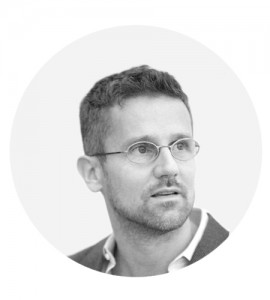
Director, MIT Senseable City Lab Founding Partner, Carlo Ratti Association
An architect and engineer by training, Carlo Ratti practices in Italy and teaches at the MIT, where he directs the Senseable City Lab. Ratti has co-authored over 250 publications and holds several patents. His work has been exhibited in several venues worldwide, including the Venice Biennale, MoMA in New York City and MAXXI in Rome. At the 2008 World Expo, his ‘Digital Water Pavilion’ was hailed by Time Magazine as one of the ‘Best Inventions of the Year’. He has been included in Blueprint Magazine’s ‘25 People who will Change the World of Design’ and in Wired Magazine’s ‘Smart List 2012: 50 people who will change the world’. He is curator for the ‘Future Food District’ at Expo Milano 2015.
Senseable Cities
April 11 11:00 am – 12:00 pm
Location TBD
Transit and the City
April 11 12:00 pm – 1:00 pm
Lawrence 206
Carol Mayer-Reed
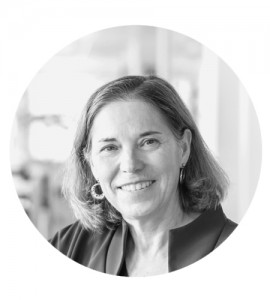
FASLA, Landscape Architect, Partner, Mayer/Reed, Inc
Carol Mayer-Reed, FASLA, is partner-in-charge of landscape architecture and urban design at Mayer/Reed, Inc. Mayer/Reed is a 22-person Portland-based design firm providing landscape architecture, urban design and visual communications services. The firm’s work in creating places for human activity explores the social, cultural, ecological and historic contexts that shape these environments. Mayer/Reed is recognized regionally and nationally for design excellence.
Carol’s 30+ years of experience represents a wide array of project types, in both the public and private sectors. Projects range from urban waterfronts and site master planning, to natural water systems, transportation corridors, urban renewal, parks and recreation, and corporate and higher education campuses.
Carol is distinguished as a Fellow of the American Society of Landscape Architects and holds registration as a landscape architect in the states of Oregon, Washington, Idaho and Ohio. She frequently lectures and presents the work of her firm at professional conferences and universities around the country.
Notable award-winning projects include The Rain Garden at the Oregon Convention Center, the Vera Katz Eastbank Esplanade, the Nike World Headquarters North Campus Expansion and Bud Clark Commons.
Sustainability and Trends in the Design Profession
April 11 2:00 pm – 3:00 pm
Lawrence 206
Dorothy S. Tang
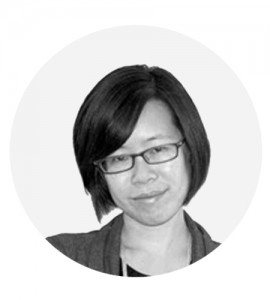 ASLA, Assistant Professor, BA(LS) Program Director at University of Hong Kong
ASLA, Assistant Professor, BA(LS) Program Director at University of Hong Kong
Dorothy Tang is an assistant professor of landscape architecture and program director of the undergraduate program at the University of Hong Kong. She teaches design studios and seminars that explore the role of landscape strategies at the intersection of everyday social operations and large-scale infrastructural systems. Her research and teaching explores regional scale landscape change in order to develop alternative methods for planning practices that could operate at a material scale. She investigates the impact of infrastructural development on urban form and design, resource extraction and post-industrial landscapes, and disturbed landscapes in events of floods, earthquakes, or other disasters. Current research efforts include the investigation of current gold-mining practices and its relationship to urban growth in Johannesburg, the process of industrialization and its impact on urban ecologies in the Pearl River Delta, and the effect of landscape systems and open space networks in historic Shanghai. Her landscape architectural practice develops design solutions that integrate current innovations in sustainable construction with indigenous cultures and technologies in order to build prototypes and demonstrations that can be replicated and adapted by local communities. Recent projects include sewage treatment wetlands in a rural elementary school, the planning and design for a village in Sichuan devastated twice by earthquakes and landslides, and the eco-tourism planning for a reservoir in Northern Sichuan province in China.
Prior to joining the University of Hong Kong, Dorothy was an associate at Michael Van Valkenburgh Associates in New York City. She received her BLA with Honors and Distinction from Iowa State University, and her MLA with Distinction from Harvard’s Graduate School of Design where she was awarded the ASLA Honor Award.
Lick Your Buildings
Hosted by KTISMA journal
April 10 6:00 pm – 7:00 pm
Lawrence 279
Engineered Ecologies: Systems of Design in Asia
Lawrence 115
Karen Allen
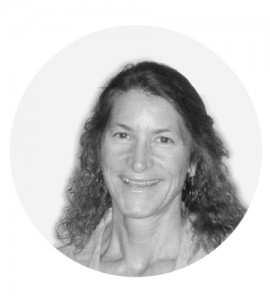 Certified Biomimicry Professional, Biologist
Certified Biomimicry Professional, Biologist
Karen is a Certified Biomimicry Professional who is passionate about sharing the secrets of the natural world to inform sustainable innovations. She is a seasoned biomimicry educator, facilitator and consultant who has been practicing biomimicry on a variety of projects since 2000. Her interdisciplinary science background and love of natural history help Karen translate nature’s strategies for architects, engineers, and designers. She has been the lead biologist, trainer, and facilitator on several biomimicry projects, guiding clients through the Biomimicry Design Process, including the City of Boulder’s Genius of Place Project in 2014, Cuyahoga County Green Bulkhead Project in 2013, and Biomimicry Oregon’s Genius of Place Project in 2012. Karen also is an integral part of Biomimicry 3.8′s (B3.8) teaching and consulting team, leading innovators in understanding the practice of biomimicry. She currently teaches the 2013-2015 Biomimicry Professional Certification Program and the Master of Science in Biomimicry Program at B3.8 & Arizona State University on-line. www.aequinoxhabitat.com
Biomimicry: Emulating Nature’s Patterns for Sustainable Design
Michael Pawlyn
Biomimicry Pioneer, Architect
Michael Pawlyn has been described as a pioneer of biomimicry and established Exploration Architecture in 2007 to focus exclusively on this emerging discipline. In 2008 the company was short-listed for the Young Architect of the Year Award and the internationally renowned Buckminster Fuller Challenge. He jointly initiated the Sahara Forest Project and is a Founding Partner of Sahara Forest Project AS – a company established to deliver concrete initiatives for restorative growth
Prior to setting up Exploration Michael Pawlyn worked with Grimshaw for ten years and was central to the team that radically re-invented horticultural architecture for the Eden Project. He was responsible for leading the design of the Warm Temperate and Humid Tropics Biomes and the subsequent phases that included proposals for a third Biome for plants from dry tropical regions.
He has lectured widely on the subject of sustainable design in the UK and abroad and in May 2005 delivered a talk at the Royal Society of Arts with Ray Anderson, CEO of Interface. In 2007 Michael Pawlyn delivered a talk at Google’s annual ‘Zeitgeist’ conference and, in 2011, became one of only a small handful of architects to have a talk posted on TED.com. His TED talk has since had over a million viewings. In the same year, his book Biomimicry in Architecture was published by the Royal Institute of British Architects. Exploration is currently working on a range of biomimicry-based architectural projects and a book commissioned by TED.
Biomimicry – A New Paradigm
Saskia Dennis-van Dijl
 Director of Business Development, Cameron MacAllister Group
Director of Business Development, Cameron MacAllister Group
Saskia advises clients broadly on business development and marketing. She leads clients through the development of strategic and tactical marketing plans and budgets, providing counsel to in-house marketing principals and senior marketing staff on best practices, marketing trends, and prospective clients. Saskia’s focus is on Strategic Message Development for architects, engineers and contractors. She works closely with firms to develop strategies for successful marketing presentations: developing clear messages, organizing those messages, and creating visual/graphic support for those messages. She works intensively to prepare teams for competitive presentations. Saskia joined the Cameron MacAllister Group in 1999 after 11 years as Director of Business Development for EHDD / Esherick Homsey Dodge & Davis in San Francisco. She was educated at Swarthmore College.
Lecture - Saskia Dennis-van Dijl
Sustainability and Trends in the Design Profession
April 11 2:00pm – 3:00pm Lawrence 177
Karen Williams
Secretary & Director of Communication, AIA SWO, Project Architect, Pivot Architecture
Karen E. Williams is a project architect at PIVOT Architecture in Eugene, OR, where she is currently working on two local elementary schools. In her previous experience, she was a member of the HKS Architects Inc. Commercial Assembly and Sports and Entertainment Group in Orlando, FL. Where she has served as the Assistant Project Manager and Building Information Modeling (BIM) Manager on several projects including the Dr. Phillips Center for the Performing Arts in downtown Orlando.
Currently, she is the Secretary and Director of Communication for the American Institute of Architects Southwestern Oregon chapter (AIA-SWO). As the 2012 and 2013 chairperson of Women In Architecture – Orlando (WIA-O) her personal goal was to learn from the influential women in Orlando’s architecture community. Now in Oregon, as an Adjunct Professor at the University of Oregon, she continues to contribute and learn by supporting the mission of the local student group STAnDD (Supporting the Advancement of Diversity in design). She wants to be a part of the living legacy of Women architects in the profession by being an active example of professional practice. In 2014 Karen was a recipient of the National Young Architects Award. She is consistently working to educate people about the inner benefits of the architecture community. She believes strongly in the need to market architecture to citizens of all ages and is willing to share her talents with the community.
Sustainability and Trends in the Design Profession
April 11 2:00pm – 3:00pm Lawrence 177
Amy Vohs
 Chair, ForWARD, Architect, Mulvanny G2 Architecture
Chair, ForWARD, Architect, Mulvanny G2 Architecture
Amy Vohs is a registered architect with over 17 years of experience in commercial and residential architecture. She has been Co-Chair of a Women In Leadership initiative at MulvannyG2 Architecture for four years focusing on policy and cultural change as well as professional development. Amy is currently the Chair for ForWARD. ForWARD – Forum for Women in Architecture and Related Design; an AIA committee focusing on bringing women together for mentoring and networking opportunities as well as to help promote women working in the industry in many different disciplines.
Sustainability and Trends in the Design Profession
April 11 2:00pm – 3:00pm Lawrence 177
Michael Fifield
FAIA, AICP, Professor, Principal, Fifield Architecture + Urban Design
Michael Fifield, FAIA, AICP, is Professor of Architecture at the University of Oregon where he is Director of the Housing Specialization Program and is principal in the firm Fifield Architecture + Urban Design. His teaching and practice concentrates on smart growth and smaller dwelling unit design as a key to sustainability. He is a graduate in architecture from UC Berkeley and UCLA. Prior to joining the faculty at the University of Oregon as department head, Michael was department head at Penn State University, and prior to that he taught at Arizona State University where he was Director of the Joint Urban Design Program.
Design as a Social Tool: Building Communities
James Miller
Ph.D. Candidate in Sustainable Architecture
James Miller is pursuing a Ph.D. in sustainable architecture with a focus on social and cultural resilience of climate change refugees. He has a Bachelor of Architecture degree from the University of Notre Dame with a certificate in social entrepreneurship and a Master of Architecture degree from the University of Oregon, which focused on the role of traditional settlement patterns in post-disaster Haiti. Miller has a strong commitment to, and experience in, social justice in architecture. He has experience working on projects pertaining to micro-entrepreneurship, post-disaster recovery, public-housing, and culturally based design. James’ research helps bring a needed cultural perspective to critical social issues, and the results of such research will help communities rebuild while maintaining their basic identities. Miller previously instructed a course on Humanitarian Design and continues to promote the importance of an architecture of inclusion and the need to critically evaluate the impact of the built-environment on social and cultural sustainability.
Design as a Social Tool: Building Communities
Andrew Heben
Urban Planner, Writer
Andrew Heben has a background in urban planning and is the author Tent City Urbanism: From Self-Organized Camps to Tiny House Villages. Many of the ideas in his book have been put into action through the co-founding of Opportunity Village Eugene, a local non-profit organization that develops self-managed communities of low-cost tiny houses for those in need of housing.
Design as a Social Tool: Building Communities
Sustainability and Trends in the Design Profession
April 11 2:00pm – 3:00pm Lawrence 177
Alison Halderman
Alison Halderman has participated in community building in diverse locations over decades. As a teen and young adult in Eugene in the 1970’s, she was involved in the founding of neighborhood groups and other community institutions. Another decade was spent working with island communities around education and energy issues. She appreciates the impact of space and design, and has used this awareness when organizing successful community programs and events.
Design as a Social Tool: Building Communities
Chelsea McCann
ASLA, Managing Principal, Walker Macy
Chelsea McCann, ASLA, LEED® AP BD+C is Managing Principal with Walker Macy, a 39-year-old landscape architecture and urban design firm with locations in Portland and Seattle. Chelsea is a landscape architect with skills in project management, design and construction documentation, and an emphasis on environmentally sustainable design. She has a broad range of project experience including campus site planning and design, programmed urban spaces, public parks, and mixed-use developments.
Sustainability and Trends in the Design Profession
April 11 2:00pm – 3:00pm Lawrence 177
Jennifer Wieland
Project Manager, Seattle Department of Transportation
Jennifer brings more than ten years of experience to transportation planning. A strategic thinker with a passion for building great cities, Jennifer specializes in multimodal and active transportation. She understands the connection between the places we live, the ways we get around, and our individual and community health. She uses new and creative ways to engage stakeholders and shape plans and projects that best meet the needs of the community.
From master planning to project definition and development to policy and program formation, Jennifer is a skilled project manager. While with the Seattle Department of Transportation, Jennifer played a lead role in the city’s pedestrian and transit master plans and managed the Elliott Bay Seawall Project. She developed Seattle’s Public Space Program—including parklets, play streets, and street ends—and played a critical role in the launch of Seattle’s bike share system. The Pedestrian Master Plan was the first in the nation to include health objectives, and the award-winning prioritization approach contributed to Seattle’s designation as the first platinum-level Walk Friendly Community.
Transit and the City
April 11 12:00 pm – 1:00 pm
Lawrence 206
Chris Bell
Coordinator, Oregon Department of Transportation Historic Resource Group, Instructor of Historic Preservation
B.A. in Architectural Studies, Williams College; M.S. in Historic Preservation, University of Oregon. Chris Bell leads Oregon’s Department of Transportation Historic Resource Group, where he oversees the policy and program efforts statewide for historic resource identification and evaluation. He is also a subject matter expert for the DOT on alternative transportation modes. He also teaches at the University of Oregon’s graduate program in Historic Preservation, including a course on Transportation & Preservation. His research interests include recreation history in the Pacific Northwest, reconnecting our transportation past with our transportation future, and bathing traditions in the Japanese-American settlements.
Transit and the City
April 11 12:00 pm – 1:00 pm
Lawrence 206
Brook Muller
Acting Dean of School of A&AA, Associate Professor in Architecture, University of Oregon
Brook Muller is Acting Dean of the School of Architecture and Allied Arts (A&AA), Associate Professor of Architecture, and core faculty member in the Environmental Studies Program at the University of Oregon. He also directs A&AA’s Graduate Certificate Program in Ecological Design. Brook’s research bridges design theory and ecologically responsive practice. From 1993-1996, Brook worked with Behnisch Architects in Stuttgart, Germany, serving as co-project leader on the IBN Institute for Nature Research, a European Union pilot project for human and environmentally friendly building. Brook was an Assistant Professor in the Architecture Department at California Polytechnic State University San Luis Obispo from 2000-2004, directing the College’s minor in sustainable environments, recipient of an American Institute of Architects Committee on the Environment National Award in 2005. In 2009, he was awarded the Campus Compact Award for Civic Engagement in Sustainability. Brook is the author of Ecology and the Architectural Imagination (Routledge 2014)..
Lick Your Buildings
Hosted by KTISMA journal
April 10 6:00 pm – 7:00 pm
Lawrence 279
Philip Speranza
Assistant Professor of Architecture, Co-Director, Urban Interaction Lab, University of Oregon
Philip Speranza is an Assistant Professor in the School of Architecture and Allied Arts at the University of Oregon and directs the Life, City, Adaptation: Barcelona Urban Design Program. Philip holds a Masters of Architecture from Columbia University, a Bachelor of Science in Architecture with minor in Philosophy from the University of Virginia and is a practicing architect. He has worked with Steven Holl and Carlos Ferrater. Design projects in the US and Spain have included urban design projects, public art works with artist Janet Echelman, infrastructure, mixed-use and housing. Research interest in urban design and computing investigates new geographic information workflows using in-situ data collection of urban phenomena. He is Co-Director of the Urban Interactions Lab and partner of Urban Design & Computing Lab studying air pollution and urbanism in Spain and the US. These methods are tested at Speranza Architecture + Urban Design, named finalists for the Market Value International Design Competition.
Transit and the City
April 11 12:00 pm – 1:00 pm
Lawrence 206
Rob Zako
Executive Director, Better Eugene-Springfield Transit, Research Associate, UO Sustainability City Initiative
Rob Zako is the Executive Director of Better Eugene-Springfield Transit (BEST), which advocated for approval of the West Eugene EmX bus rapid transit line. He is also a research associate with the UO Sustainable Cities Initiative, where is is currently looking at how four case study states are trying to reduce greenhouse gas emissions from transportation, primarily by making it easier for people to drive less. He has been working on transportation and sustainability issues in Oregon for 17 years. He has a Ph.D. in theoretical physics from Berkeley and a B.A. in math from Harvard. He and his wife Kayleen met one a bicycle trip Rob led and have lived in Eugene for 21 years.
Transit and the City
April 11 12:00 pm – 1:00 pm
Lawrence 206






